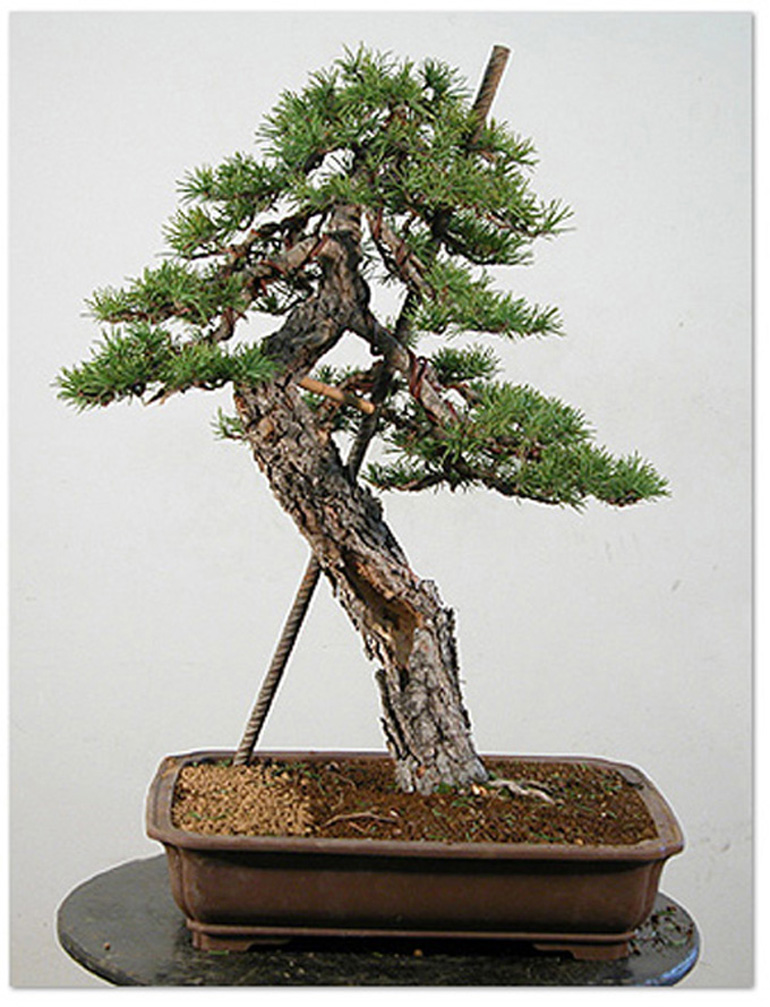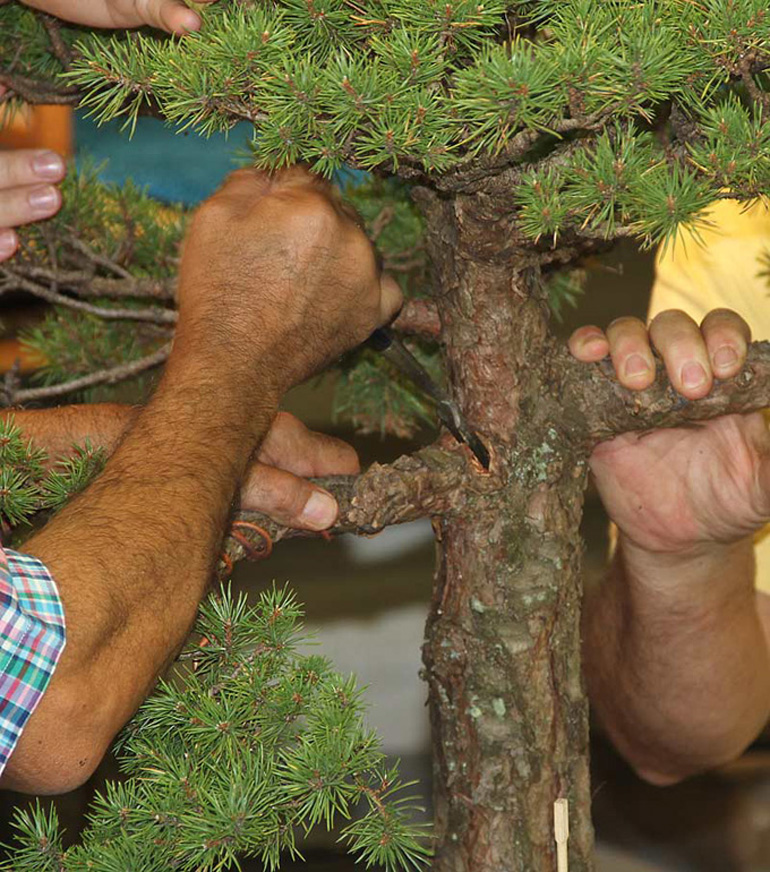
This is what you can do with a little daring and more than a little skill. The huge crack just up from the base of the trunk is intentional. Without it, there's no way this old pine is surrendering to that first subtle bend and without the rebar and wooden peg there's no way the second larger bend is holding. This photo and the before photo below are from David Benavente's Estudio de Bonsai.
We featured this one fairly recently (August of last year), but, because it shows techniques you might never see, I think it’s worth another look.
Before. What would you have done?
This simple and clear illustration (from the ABS website) shows how to use a turnbuckle to lower a branch. The turnbuckle is made up of a single strand of wire, a short stick (or short piece of heavy wire) and two rubber pads to protect the branches. Beyond that, it needs no explanation.

Another clear illustration from the same ABS article that shows one way to wire two branches, using a section of trunk as anchor. This illustration originally appeared in Debra Koreshoff's Bonsai, Its Art, Science, History and Philosophy (out of print). It was modified by George Buehler (on the ABS website).

Another pine and another radical technique. This cut will serve two purposes: first, it will make it easier to lower the branch, and second, it will provide a place to insert stones (yes, stones) to keep the branch from popping back up. This photo is originally from a Bill Valavanis’ open house back in 2011. We posted it under the title, Restyling A Stubborn Old Tree. It provides an excellent lesson in dealing with an old tree with defects that require radical measures to correct.
Wire is almost always involved styling bonsai
Bonsai Wire Sale

25% off Bonsai Wire
all of our vast wire selection is now 25% off